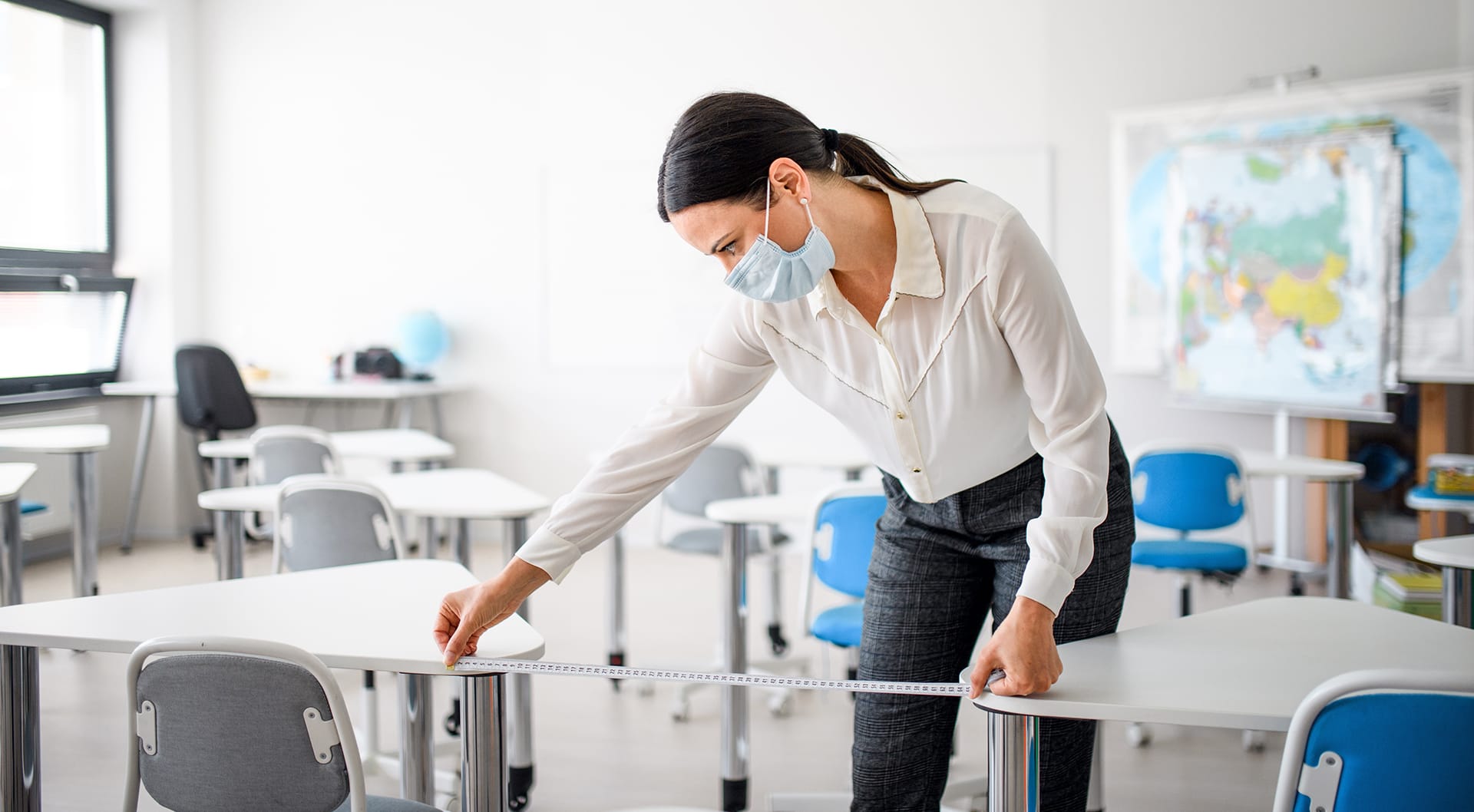The process of reopening educational institutions during the Covid-19 pandemic posed a dilemma between public safety and the needs of students and parents.
As summer vacations came to an end, countries around the world were required to make a decision based on the research and studies available: Open educational institutions, or continue to hold online studies only?
The reopening of educational institutions is an important factor in relieving the struggle families face during the Covid-19 crisis:
- Needs of the children: Educational routine and social gatherings are essential to a child’s personal development.
- Needs of the parents: The parents’ regain their ability to fully work if they are not required to stay home with their children.
The main problem with the reopening of educational institutions is the risk of infection among students, which could spread the virus in their families, thus significantly raising morbidity levels. Only education institutions for students with special needs are exempt from the restrictions and enforcement.
In many countries, the increase in morbidity can be related to the reopening of educational institutions, according to increased morbidity at ages 10-19. In Belgium, Slovenia, Ireland and Greece, educational institutions reopened in early September 2020, followed by a significant outbreak of the virus nationwide. This increase in morbidity can also be linked to the summer events during the end of August 2020. Although the increase is not attributed to the opening of educational institutions alone, it is highly likely that it contributed to this situation.
The significant increase in morbidity is usually seen in upper grade students. Therefore, different programs have been devised for different age groups. In the Netherlands and in Spain, elementary school students returned to contact studies. In South Korea, due to final exams in high schools, the occupancy rate of high school students was higher than in the lower grades.
Educational institutions around the world made great efforts to reduce infection
Online Learning:
Increasing the tools for online studying and encouraging the use of them as much as possible. In New York, students can choose between an online study program or a combination of online and contact studies. Also, various projects around the world have carried out digital devices donations for students who cannot afford them.
Proper prevention measures:
Ensuring distance between the staff and the students and between the students themselves, measuring temperature, and maintaining hygiene. Wearing masks is usually enforced only in high schools, but in Spain the obligation is valid for students from the age of 6.
Information for students and staff:
In New York, an information project was carried out for the entire teaching staff before the opening of the educational institutions, and information classes were obligatory for all students during the first three days of the year. Students attended class in small capsules, which reduces the extent of infection, and cuts infection chains within the educational institution.
Ability to tighten restrictions:
Sometimes, when state directives are loose, educational institutions themselves choose to strengthen them. In the Netherlands for example, the obligation to wear a mask and maintain social distance was not defined at a state level, but 20% of the institutions chose to enforce masks. In Japan, the guidelines for learning in schools were particularly stringent — Even during recess, students were not allowed to talk with each other, and each student was separated from the other students by bulks. Apparently, this approach helped maintain the low morbidity level in the country.
The case studies of the United Kingdom, France and Spain — where schools were opened when morbidity rates in the countries were very high — showed that infections continued to rise after the institutions reopened. In contrast, Croatia was opened for tourists in the summer, which significantly raised the morbidity level. However, when schools reopened for students, stricter guidelines were also added to the entire public. Therefore the rise in morbidity in educational institutions was negligible, and overall morbidity in the country declined.
In Israel, The ‘Traffic light outlines‘ have been introduced in Israel since September 2020. Under the ‘Traffic light outline’, educational institutions in red cities must close while institutions in other cities can open. In addition, the educational outline has been implemented to include frequent sampling of educational institutions in the country. Teaching staff and students are rested to find latent, asymptomatic and pre-clinical morbidity.
The ultra-Orthodox community — whose educational institutions are a major part of the lifestyle — acted according to a special outline that matches the characters of the educational institutions (yeshivot).
The different approaches of the countries, according to the extent of their morbidity, show that the dilemma regarding the opening of educational institutions is significant. The high cost of closing educational institutions includes not only the social and educational harm to students, but also compromises the full opening of the economy with the return of parents to full-time employment.
On the other hand, in areas where the level of morbidity is high, it can be assumed that the opening of educational institutions will cause the level of morbidity to continue to rise. However, various outlines and technologies can assist in the partial opening of educational institutions, in addition to studying in capsules and maintaining social distance.
References:
- Continuing infection waves and outbreaks in many countries during the weeks following the beginning to the school year, Information and Knowledge Center, 15.10.2020

